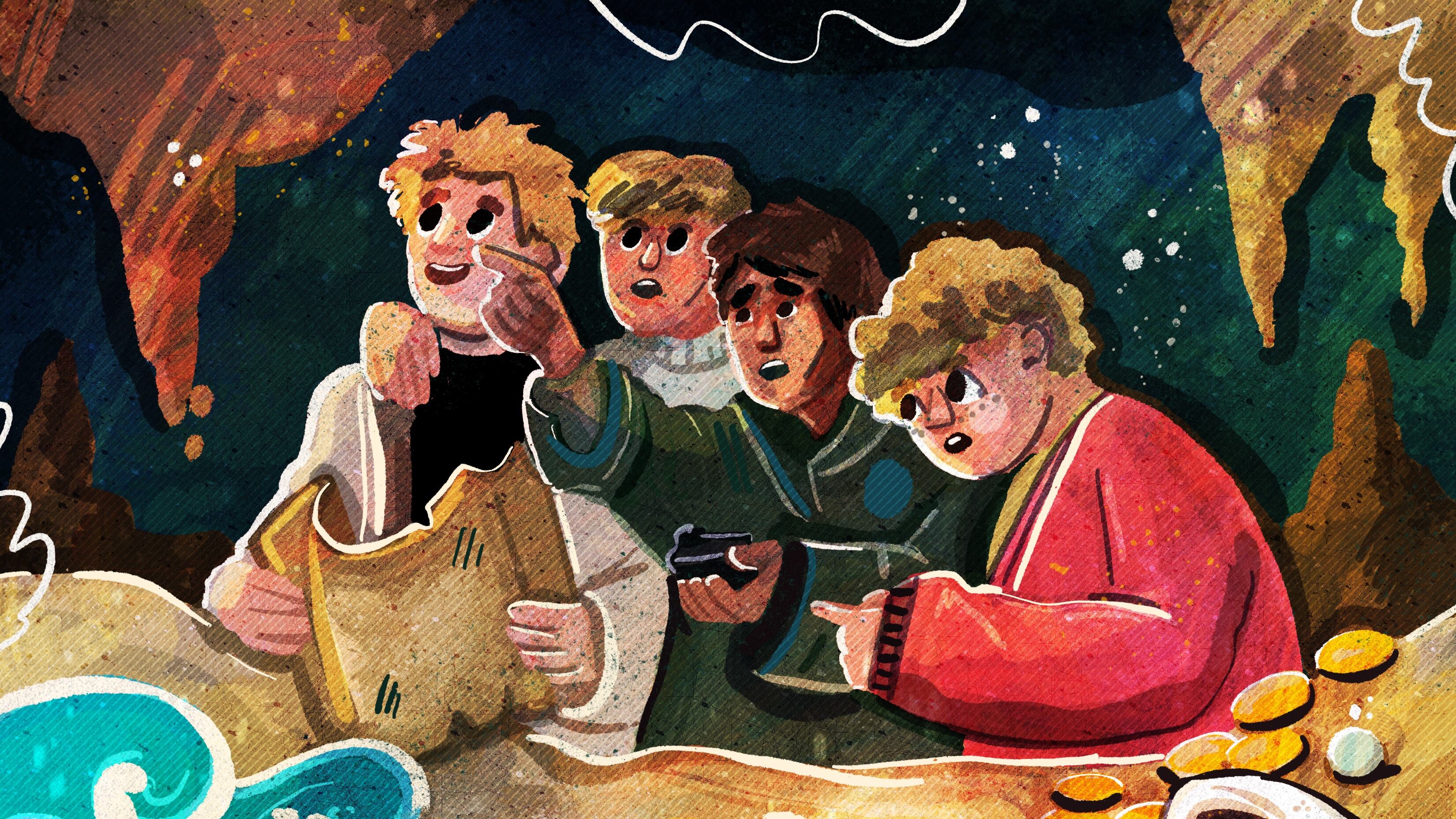For more than a decade, historians Doug Kenck-Crispin and J.B. Fischer obsessed over a shipwreck on the Oregon Coast that inspired The Goonies. Their documentary The True Quest for Fabled Treasure on the Oregon Coast, made with filmmaker Tony Altamirano, answers some questions but leaves room for further discovery.
Kenck-Crispin (who previously wrote about the subject for WW) and Fischer aren’t the first to be reeled in by this mystery, but they’re treasure hunters of a different sort—they sought information instead of jewels and gold doubloons. And while they had never made a film before, the medium seemed an effective way to tell the story and dig deeper.
“J.B. and I have been talking about this treasure for 10 years,” says Kenck-Crispin. “We were thinking: do we pitch a story, do we do a podcast? We’d done all that other stuff before and it’s a very visual story, so we decided to make a film,” said Kenck-Crispin.”
Another team was also working on a film about the same shipwreck, prompted by recent confirmation that timbers found on the shore were from a Spanish galleon (for the uninitiated, that’s a multidecked sailing ship). They convinced many of their sources to sign nondisclosure agreements so they couldn’t talk to the makers of The True Quest for Fabled Treasure on the Oregon Coast, which is part of the video and podcast series Secrets of the Mysteries.
Nonetheless, the scrappy True Quest group discovered some precious pieces of this puzzle. “We found photos, film, maps, and footage from a local cable program from the late 1980s called Digging Up the Past,” says Kenck-Crispin.
Meanwhile, the project’s location scout, who goes by the pseudonym Davy Jones, came across locals who had heard stories about the wreck. These coastal residents also collected bits of porcelain and chunks of beeswax on the beach over the years.
Jones, accompanied by cave diver and marine ecologist Grant Law, visited the caves where local fisherman and beachcomber Craig Andes found large pieces of timber that he believed were parts of the shipwreck in 2013.
“Our location scout started talking to random people,” says Kenck-Crispin. “There were people coming out of the woodwork with artifacts, beeswax and articles.”
In 2020, Andes contacted the Maritime Archaeological Society. Many doubted the timber came from a Spanish galleon until lab analysis found it most likely came from the shipwreck commonly known as the Beeswax. That said, Kenck-Crispin warns any would-be treasure hunters to avoid searching the caves; it’s very dangerous.
“People shouldn’t go in there,” says Kenck-Crispin. “Our team is very skilled but it’s dangerous. They weren’t always sure they’d get out alive. Davy Jones said that if I die, use the footage or I’ll haunt you.”
Scott Williams, principal investigator for the Beeswax Wreck Project Team at the Maritime Archaeological Society, is 99% sure that wood fragments found in Manzanita by Andes are from the Spanish galleon Santo Cristo de Burgos—a ship that set sail from Spain in 1693 and then disappeared (Williams tells WW that MAS is not affiliated with the film and does not condone treasure hunting).
For 250 years, Spanish ships like the Burgos left once a year from the Philippines carrying beeswax for candles for Catholic rituals, silk, porcelain, spices and other valuable goods, then landed in Acapulco, Mexico, around Christmas. In hundreds of years of such trade, only four ships were completely lost.
In the late 1960s and early ‘70s, an Astoria man who went by the names Ed Fire and Tony Moreno joined this centurieslong hunt. Fire/Moreno was a devout Catholic. He believed there was treasure on the beach, got a bulldozer, and began digging along with some kids. Local and national media covered this ragtag search party, ultimately inspiring The Goonies.
Fire/Moreno hypothesized that the ship carried a Catholic sect seeking to separate from Spain, bringing religious relics to start their new community. He claimed he had found the Ark of the Covenant in the caves near Astoria, but ultimately left the area, cut ties with everyone he knew, and died penniless.
“There’s a lot of evidence that defies logic,” Kenck-Crispin says. “Ed Fire thought they were up there hiding stuff from the Catholic Church. If we wanted to, we could sit around, smoke a joint, and talk about theories all night.”
That won’t be possible at the Hollywood Theatre and Astoria’s Columbian Theater, the two venues showing the film in October. But after True Quest completes its theatrical run and begins streaming, viewers can ponder its mysteries Big Lebowski-style at home.
SEE IT: The True Quest for Fabled Treasure on the Oregon Coast screens at the Hollywood Theatre, 4122 NE Sandy Blvd., 503-493-1128, hollywoodtheatre.org. 2 pm Sunday, Oct. 15. $9.
